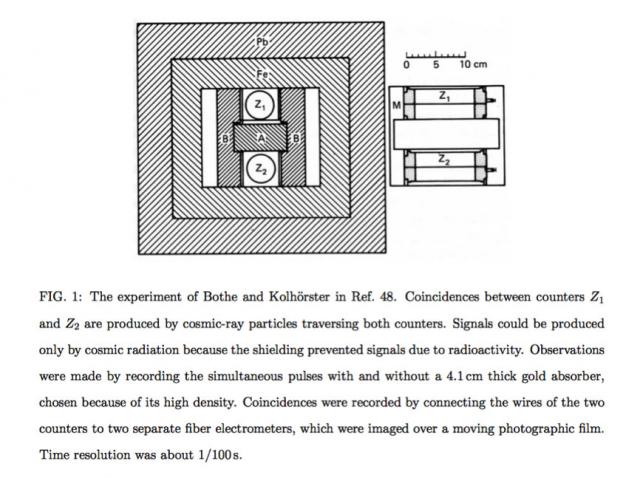Geiger-Müller counters and the coincidence technique

Bothe and Kolhorster’s experiment (Image: L. Bonolis, American Journal of Physics, 79 (2011), 1133. Reproduced under Creative Commons license)
In 1929 Hans Geiger and Walter Müller developed a gas filled ionization detector – a tube that registers individual charged particles. This Geiger-Müller counter was ideal for studying high-energy cosmic rays. Two such tubes placed one above the other could register 'coincidences' – when an incoming particles passes through both tubes – and thus define the path of a cosmic ray. Walther Bothe and Werner Kolhörster connected two Geiger counters to electrometers and immediately observed these ‘coincidences’.
A gamma ray only fires a Geiger counter if it knocks an electron out of an atom. The observation of coincident signals suggests that a cosmic gamma ray had either produced two electrons or that a single electron had fired both counters. To test if it was an electron that had set off both counters Bothe and Kolhörster put gold 4 cm thick between the counters to absorb the electrons knocked off from the atoms. They found that the rays were not affected and concluded that cosmic rays consisted of electrically charged particles and not gamma rays. Interposing a 4 cm thick gold piece between the tubes only slightly reduced the coincidence rate proving that cosmic rays contain charged particles of much higher energy than the Crompton electrons that would be produced by gamma rays.